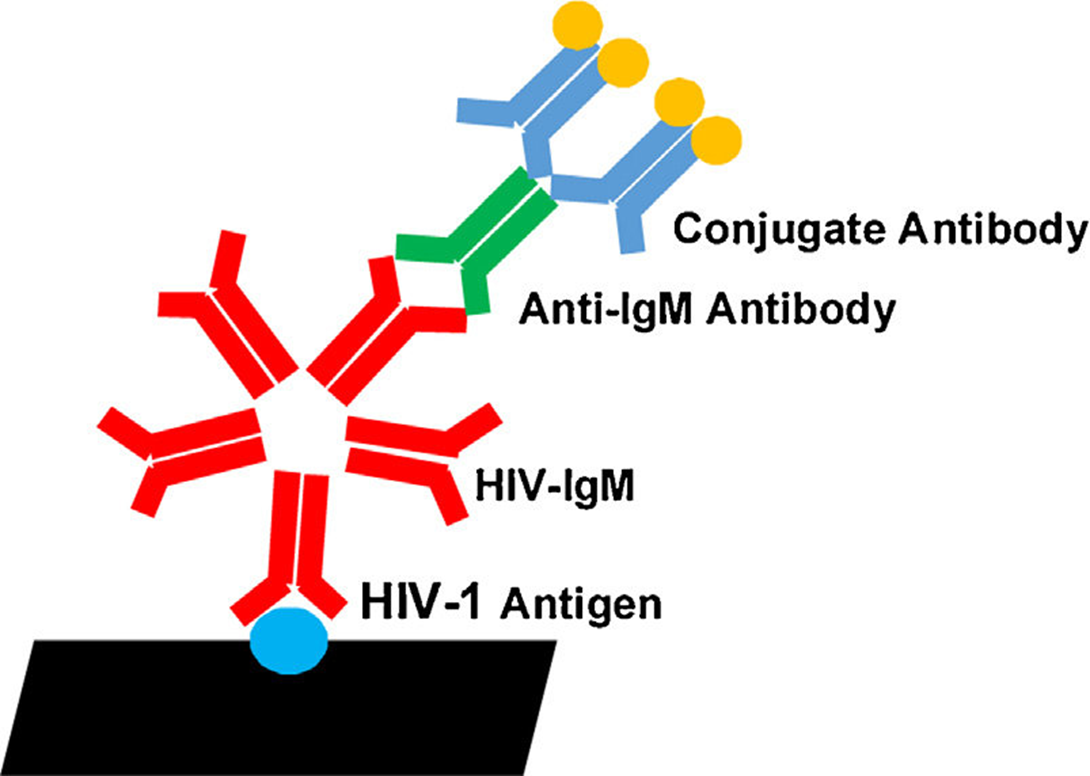A nurse is counseling a client who is to undergo enzyme-linked immunosorbent assay (ELISA) testing for HIV. Which of the following information should the nurse include?
The test monitors the progression of the disease
The test measures antibodies to the virus
The test results are accurate 24 hours after exposure to the virus
A positive result requires initiating immunoglobulin administration
The Correct Answer is B
Choice A reason: The test does not monitor the progression of the disease, as it only detects the presence of antibodies to HIV, not the amount of virus or the damage to the immune system. Other tests, such as viral load and CD4 count, are used to monitor the progression of HIV infection and the response to treatment.
Choice B reason: The test measures antibodies to the virus, which are produced by the immune system in response to HIV infection. The test is used to screen for HIV infection and to confirm the diagnosis. A positive result indicates that the person has been exposed to HIV and has developed antibodies to the virus.
Choice C reason: The test results are not accurate 24 hours after exposure to the virus, as it takes time for the body to produce enough antibodies to be detected by the test. The window period, which is the time between exposure to HIV and a positive test result, varies from person to person, but it can range from 3 weeks to 3 months. Therefore, a negative result does not necessarily rule out HIV infection, and a repeat test may be needed after the window period.
Choice D reason: A positive result does not require initiating immunoglobulin administration, as immunoglobulin is not a treatment for HIV infection. Immunoglobulin is a preparation of antibodies that can provide temporary protection against some infections, but it does not affect HIV. A positive result requires further confirmation by a more specific test, such as the Western blot, and referral to a specialist for treatment and counseling.

Nursing Test Bank
Naxlex Comprehensive Predictor Exams
Related Questions
Correct Answer is D
Explanation
Choice A reason: Giving positive feedback to students who make appropriate choices is a good strategy to reinforce healthy eating, but it is not the first action that the nurse should take. The nurse should first assess the students' readiness to learn and their motivation to change their behavior.
Choice B reason: Helping students recognize the value of making healthy food choices is an important goal of the program, but it is not the first action that the nurse should take. The nurse should first determine the students' current knowledge, attitudes, and beliefs about healthy eating and tailor the program accordingly.
Choice C reason: Providing students with resources about making wise choices independently is a useful way to support their learning, but it is not the first action that the nurse should take. The nurse should first identify the barriers and facilitators that influence the students' food choices and address them in the program.
Choice D reason: Determining students' motivation to learn about healthy food choices is the first action that the nurse should take. This is based on the principle of learner-centered education, which states that the nurse should assess the learners' needs, interests, and readiness to learn before planning and implementing the program.
Correct Answer is D
Explanation
Choice A reason: Middle Eastern cultural practices do not necessarily include hiding pain from close family members. Some Middle Eastern cultures may express pain openly and seek support from family and friends, while others may prefer to endure pain stoically and privately.
Choice B reason: Native American cultural practices do not always include being outspoken about pain. Some Native American cultures may view pain as a natural part of life and a test of endurance, while others may seek relief from pain through traditional healing methods.
Choice C reason: Puerto Rican cultural practices do not always include the view that outspoken expressions of pain are shameful. Some Puerto Rican cultures may express pain loudly and dramatically, while others may use humor and distraction to cope with pain.
Choice D reason: Asian cultural practices often include suppressing pain to avoid burdening others. Many Asian cultures value harmony, collectivism, and self-control, and may perceive pain as a sign of weakness or dishonor. They may also believe that pain has a spiritual or karmic origin and should be accepted.
Whether you are a student looking to ace your exams or a practicing nurse seeking to enhance your expertise , our nursing education contents will empower you with the confidence and competence to make a difference in the lives of patients and become a respected leader in the healthcare field.
Visit Naxlex, invest in your future and unlock endless possibilities with our unparalleled nursing education contents today
Report Wrong Answer on the Current Question
Do you disagree with the answer? If yes, what is your expected answer? Explain.
Kindly be descriptive with the issue you are facing.
